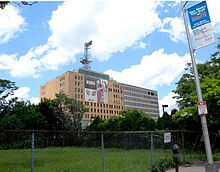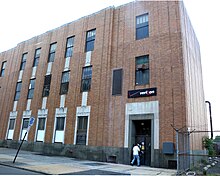
Dual-tone multi-frequency signaling (DTMF) is a telecommunication signaling system using the voice-frequency band over telephone lines between telephone equipment and other communications devices and switching centers. DTMF was first developed in the Bell System in the United States, and became known under the trademark Touch-Tone for use in push-button telephones supplied to telephone customers, starting in 1963. DTMF is standardized as ITU-T Recommendation Q.23. It is also known in the UK as MF4.
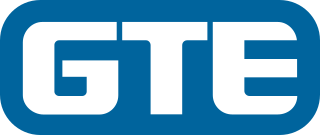
GTE Corporation, formerly General Telephone & Electronics Corporation (1955–1982), was the largest independent telephone company in the United States during the days of the Bell System. The company operated from 1926, with roots tracing further back than that, until 2000, when it was acquired by Bell Atlantic; with the combined companies formed under the currently operating Verizon banner.

A Regional Bell Operating Company (RBOC) was a corporate entity created as result of the antitrust lawsuit by the U.S. Department of Justice against the American Telephone and Telegraph Company (AT&T) in 1974 and settled in the Modification of Final Judgment on January 8, 1982.
Caller identification is a telephone service, available in analog and digital telephone systems, including voice over IP (VoIP), that transmits a caller's telephone number to the called party's telephone equipment when the call is being set up. The caller ID service may include the transmission of a name associated with the calling telephone number, in a service called Calling Name Presentation (CNAM). The service was first defined in 1993 in International Telecommunication Union – Telecommunication Standardization Sector (ITU-T) Recommendation Q.731.3.

A blue box is an electronic device that produces tones used to generate the in-band signaling tones formerly used within the North American long-distance telephone network to send line status and called number information over voice circuits. During that period, charges associated with long-distance calling were commonplace and could be significant, depending on the time, duration and destination of the call. A blue box device allowed for circumventing these charges by enabling an illicit user, referred to as a "phreaker," to place long-distance calls, without using the network's user facilities, that would be billed to another number or dismissed entirely by the telecom company's billing system as an incomplete call. A number of similar "color boxes" were also created to control other aspects of the phone network.

BellSouth, LLC was an American telecommunications holding company based in Atlanta, Georgia. BellSouth was one of the seven original Regional Bell Operating Companies after the U.S. Department of Justice forced the American Telephone & Telegraph Company to divest itself of its regional telephone companies on January 1, 1984.
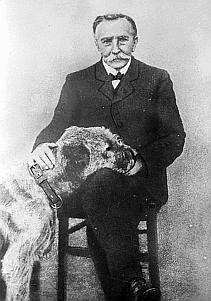
This timeline of the telephone covers landline, radio, and cellular telephony technologies and provides many important dates in the history of the telephone.
Rochester Telephone Corporation was a company that provided local telephone service to Rochester, New York. The company was founded in 1920 as a merger of Rochester Telephonic Exchange and Rochester Telephone Company. In 1995 the company became Frontier Corporation, trading on the NYSE under the FRO symbol. Ownership passed to Global Crossing in 1999, and then, in 2001, to Citizens Utilities Corporation, which later changed its name to Frontier Communications.

The monopoly position of the Bell System in the U.S. was ended on January 8, 1982. AT&T Corporation proposed by in a consent decree to relinquish control of the Bell Operating Companies, which had provided local telephone service in the United States. AT&T would continue to be a provider of long-distance service, while the now-independent Regional Bell Operating Companies (RBOCs), nicknamed the "Baby Bells", would provide local service, and would no longer be directly supplied with equipment from AT&T subsidiary Western Electric.
Verizon New York, Inc., formerly The New York Telephone Company (NYTel), was organized in 1896, taking over the New York City operations of the American Bell Telephone Company.
Hawaiian Telcom, Inc., is the incumbent local exchange carrier (ILEC) or dominant local telephone company, serving the state of Hawaii. In 2005, Hawaiian Telcom Holdco, Inc., was formed by The Carlyle Group, following its purchase of the Hawaiian Telcom Inc. assets of Verizon Communications. On July 2, 2018, Cincinnati Bell purchased Hawaiian Telcom Holdco, Inc. for $650 Million,

Verizon New England, Inc. is a Bell Operating Company that once covered most of New England but now only serves most of Massachusetts and all of Rhode Island. It was formerly New England Telephone and Telegraph Company, more commonly known as New England Telephone, which for seven decades served most of the New England area of the United States as a part of the original AT&T. New England Telephone's original coverage area included Maine, New Hampshire, and Vermont as well as Massachusetts and Rhode Island, Verizon has sold off service in the northern three states, which as of 2020 were served by Consolidated Communications.
Frontier California, Inc. is a Frontier Communications-owned operating company providing telephone service in former Verizon regions. This included Southern California cities such as Long Beach, Seal Beach, Lakewood, Norwalk and Santa Monica.
Verizon High Speed Internet is a digital subscriber line (DSL) Internet service offered by Verizon. It allows consumers to use their telephone and Internet service simultaneously over the same telephone line while benefiting from Internet connection speeds significantly faster than dial-up. This service was launched in 1998 in the North Jersey, Philadelphia, Pittsburgh and Washington D.C. areas, when Verizon was Bell Atlantic. Today, this service is available in all of Verizon's service area. It was originally known as Infospeed DSL and then Verizon Online DSL until it was changed to its current name in 2007 to avoid lawsuits.

Verizon Communications Inc., is an American telecommunications company headquartered in New York City. It is the world's second-largest telecommunications company by revenue and its mobile network is the largest wireless carrier in the United States, with 114.2 million subscribers as of September 30, 2024.
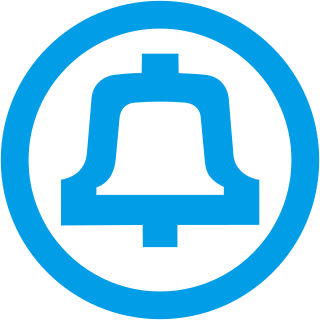
The Bell System was a system of telecommunication companies, led by the Bell Telephone Company and later by the American Telephone and Telegraph Company (AT&T), that dominated the telephone services industry in North America for over 100 years from its creation in 1877 until its antitrust breakup in 1983. The system of companies was often colloquially called Ma Bell, as it held a vertical monopoly over telecommunication products and services in most areas of the United States and Canada. At the time of the breakup of the Bell System in the early 1980s, it had assets of $150 billion and employed over one million people.

AT&T Corporation, an abbreviation for its former name, the American Telephone and Telegraph Company, was an American telecommunications company that provided voice, video, data, and Internet telecommunications and professional services to businesses, consumers, and government agencies.
Frontier West Virginia, Inc. is one of the original Bell Operating Companies and provides local telephone service in the U.S. state of West Virginia.

Verizon Fios is a bundled Internet access, telephone, and television service provided by Verizon Communications that operates over a fiber optical network within the United States.

AT&T Communications, Inc. was a division of the AT&T Corporation that, through 23 subsidiaries, provided interexchange carrier and long-distance telephone services.
